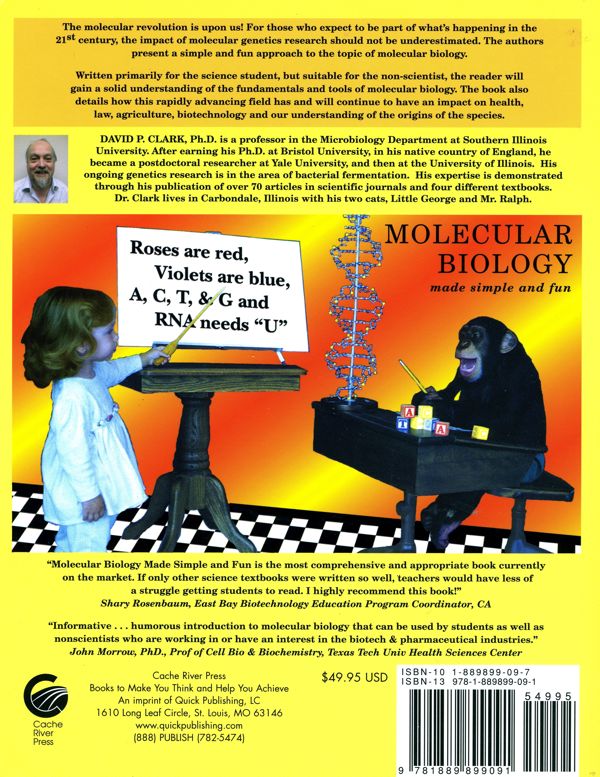Sunday, November 6, 2011 Lethbridge
5:00 am
The temperature is -12 C, with a high predicted of 0 C. From the Environment Canada website: Today Mainly sunny. Wind becoming west 20 km/h this afternoon. High zero. Tonight Clear. Low minus 11. Normals Max: 6°C Min: -6°C.
5:15 am Science
I thought it was 6 am when I woke up, but the clock on my computer says 5. Something about going back to Mountain Standard Time. This provides an opportunity for some serious reading.
As a result of reading Lynn Margolis's "Microcosmos" a few weeks ago, I bought an introductory book on molecular biology (while in a Barnes & Nobles bookstore in New York). I have now read the first few chapters and would like to consolidate my learning by making a few notes.

This is a well-written book, focusing on the details that highlight the important concepts. The diagrams are excellent. But I find some of the attempts at humor to be annoying. The chapters are short - usually less than 10 pages. I like this. Mind-size chunks. I have read chapters 1 - 4 plus chapter 30 which provides a brief review of basic chemistry.
Now to set up a format for note making. I have always liked an approach that combines the important ideas with some form of conversation with myself (aka reflection)
Chapter 1 Introduction [p. 1 - 4]
- "Although all aspects of biology can be studied at the molecular level, molecular biology is usually restricted to mean the biology of those molecules related to genes and gene products and heredity." [p. 1]
- Okay. But my interest is more general. I am interested in all aspects of cellular chemistry, not just genetics but metabolism and the interaction of various components within the cell.
Chapter 2 Bacteria: The Molecular Biologist's Guinea Pigs [p. 5 - 12]
- "Bacteria are organisms that exist as single cells." [p. 6]
- All living organisms are classified as either prokaryotes (no nucleus) or eukaryotes (have a nucleus). [p. 6]
- A typical bacterial cell has a cell wall, a membrane, cytoplasm, a single chromosome containing DNA, and ribosomes. [p. 6]
- I am interested in how these various components function and interact. How does a bacterium sustain itself? What is the role of the cytoplasm and the ribosomes?
- There are many key terms that need to become automatic in my mind. Thus I often will search Wikipedia for a term in order to get a quick sense of what it means. For example: cytoplasm - a small gel-like substance residing between the cell membrane holding all the cell's internal sub-structures (called organelles), except for the nucleus.
- The above definition also leads to another term - organelle.
- Now for ribosome - A ribosome is a component of cells that assembles the twenty specific amino acid molecules to form the particular protein molecule determined by the nucleotide sequence of an RNA molecule.
- A definition of life includes the dual criteria of being able to sustain its essential structure and being able to replicate itself.
Chapter 3 Basic Genetics [p. 13 - 24]
- The birth of modern genetics was due to the discoveries of Gregor Mendel who bred different types of peas. His key insight was to focus on one characteristic at a time (e.g. smooth or wrinkled, red or white flowers, ...). Each characteristic is now considered to be determined by a unit of genetic information called a gene. A gene is a stretch of a DNA or RNA molecule
- "An allele is a particular version of a gene." [p. 13]
- "The overall nature of an organism is due to the sum of the effects of all of its genes. Remember that in lower organisms like bacteria there may be 2,000 to 4,000 genes, whereas in higher organisms like plants and animals, there may be 30,000 to 50,000." [p. 14]
- "A polymer is a large molecule (macromolecule) composed of repeating structural units." [Wikipedia]
- "A protein is a polymer made from amino acids: they make up most of the structures in a cell" [p. 14]
- "An enzyme is a protein which carries out a chemical reaction" [p. 14]
- "A genotype is the total genetic make-up of an organism" [p. 16]
- "A phenotype is the visible effect of the genotype." [p. 16]
- A chromosome is a single DNA molecule. Genes are well-identified sub-sections of a chromosome. [p.16]
- Somatic cells: cells making up the body and which are usually diploid (have two sets of genes) [p. 18]
- Gametes: cells specialized for sexual reproduction and which are haploid (have one set of genes) [p. 18]
- Although I have seen many of these terms many times, I would have been hard pressed to say exactly what they mean. I am now a little better with this terminology.
9:30 am Model Trains
Train #601 completed its run this morning.
Engineer Terry blew the horn on CN 1720 and pulled out of Queenston on time at 3:00 am. The train completed 3 clockwise inner loops (simulating a mainline run) at a speed of 8 and then stopped at the entrance to Prairie Dog at 4:00 am.
Diesel CN 1720 uncoupled from the consist and backed into the raised siding at Dusty Coal and Cartage where it picked up a gondola car (CN 123411) loaded with sand. It then proceeded to the Hillside Lumber siding where it picked up an empty gondola car and delivered it to Dusty Coal and Cartage. The last pickup was essentially another move as it first went to the Prairie Dog station to pickup an empty boxcar (CN 520502) which it then dropped off at the Alberta Wheat Pool elevator.
The locomotive then returned to the consist of Train #601 where it coupled the block of 4 cars that were to be setout at Prairie Dog. The first setout was an empty stock car, which was taken to the Angus Stockyard. This involved some intermediate switching as 3 boxcars had to first be placed on a siding in order to free up the track in front of the stockyard. After the stock car had been setout, the locomotive then pushed the remaining 3 loaded cars to the Prairie Dog Station (CN 493528 - clothing, CN 485338 - clothing, and ONT 90075 - office supplies).
The diesel then returned to the consist and Train #601 left Prairie Dog, still on time, and completed 3 inner mainline loops at a speed of 8 before pulling into the siding at Pine Ridge at 5:00 am. This involved one simple switching move - setting out 3 cars (CN 507639 - empty boxcar, CN 55069 - empty gondola, and CN 500899 - loaded with clothing). After this was finished the train pulled back onto the mainline where it completed 3 outer mainline loops counter-clockwise and then went over the wooden trestle and through the reversing loop at Jasper. The train stopped at the entrance to Black Diamond so that it could back into the yard and pick up 5 gondola cars (1 empty and 4 loaded with coal).
Once the locomotive had picked up the gondola cars the train continued on to Jasper where it stopped just outside of the town while Train #700 left Jasper. Then Train #601 pulled into Jasper, placing two loaded gondola cars at the Jasper Coaling Tower and placing the remaining 3 gondola cars in the Jasper Yard.
Another very good operating session! I am really enjoying this. There is a nice combination of realistic switching and mainline running.
11:00 am Photography
On Saturday morning we visited a local craft show where artists and artisans were showing their wares. The quality of these shows has improved dramatically in the last couple of decades. We were especially attracted to a stall displaying some fantastic photos of birds and scenery. The author/photographer was a fellow called Ken Hoehn. We had a very pleasant chat and decided to buy one of his books, "Time, Light & Luck".
I have spent the last hour in his world, totally oblivious to anything else. I have never seen such a beautiful combination of text and images. Here is the link to Hoehn's home web page.
8:00 PM Literature

I continue to read "Infinite Jest". The in-depth descriptions of various situations are truly amazing. The story is an incredibly rich tapestry of growing up in a tennis - drug - college culture in a slightly futuristic North America that has lost its way. It actually looks a lot like the present. The only goal seems to be money and drugs are the way of coping with the lack of purpose. There is a sub-plot to the novel, but I will leave that out.
Having said this, it is not a book for everyone. The writing is very dense and with a smaller font size and sentences that run on like paragraphs, and paragraphs that run on for pages, there is a lot to read - a little over a thousand pages. It is tempting to skim read sections but that would be a mistake. The reward is in the detail.
